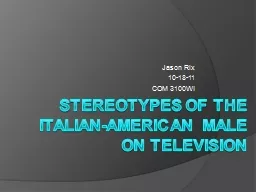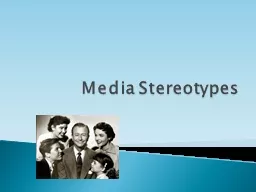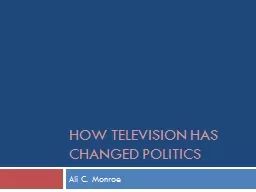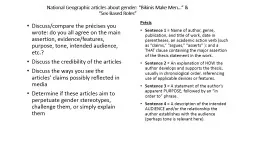PPT-Stereotypes of the Italian-American Male on Television
Author : pamella-moone | Published Date : 2017-05-19
Jason Rix 101811 COM 3100WI Introduction Television and the communication of Stereotypes Where it was once the norm for messages to be communicated via oneonone
Presentation Embed Code
Download Presentation
Download Presentation The PPT/PDF document "Stereotypes of the Italian-American Male..." is the property of its rightful owner. Permission is granted to download and print the materials on this website for personal, non-commercial use only, and to display it on your personal computer provided you do not modify the materials and that you retain all copyright notices contained in the materials. By downloading content from our website, you accept the terms of this agreement.
Stereotypes of the Italian-American Male on Television: Transcript
Download Rules Of Document
"Stereotypes of the Italian-American Male on Television"The content belongs to its owner. You may download and print it for personal use, without modification, and keep all copyright notices. By downloading, you agree to these terms.
Related Documents














